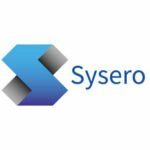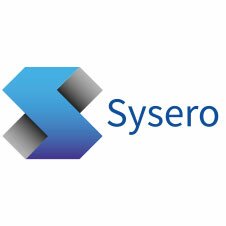Sysero: The future of legal tech is no-code & low-code
In the past couple of years, low-code and no-code applications have slowly moved into the legal work space and are now rapidly shifting the way that lawyers work. Chances are, you’re already using a low-code or no-code platform of some sort within your firm. These applications allow lawyers to automate tasks and build custom workflows, without the need for additional IT support. By lifting the complexity from technology, these applications enable lawyers to simply and quickly automate high-volume, repetitive tasks to streamline processes.
In a time when efficiency, transparency, and consistency are key, low-code and no-code platforms are providing law firms and lawyers with a significant competitive edge. Firms that have already adopted these applications are emerging as tech-savvy market leaders and discovering that the benefits extend far beyond their office walls.
While low-code and no-code technology has the potential to reshape the world of legal work, there’s still some confusion about what it is – and more importantly, how legal professionals can use it to improve their day-to-day work.
What is No-Code?
No-code platforms allow non-technical users to build and deploy their own applications, without writing a single line of code. Instead, users leverage a visual designer with drag and drop functionality to easily build modern applications. Essentially, these tools allow lawyers without any technical knowledge to create custom automated processes to meet their needs, without requiring the assistance of a developer. A simple example would be a lawyer using a visual designer to automatically save finalised documents into a DMS system.
What is Low-Code?
While no-code tools require zero coding from the end user, low-code programming removes up to 90% of the coding process. Using low-code tools, lawyers can create applications through a graphical user interface, but may require additional coding for specific situations. They work similarly to no-code applications, however, providing end users with the ability to customise certain processes and tasks to meet their unique requirements. For example, your firm might use a low-code platform to build a process for client intake, but require additional coding to include a identity check based on specific criteria.
How No-Code/Low-Code Benefits Law Firms
When it comes to legal technology, law firms typically have two choices: buy a solution or build a solution. The route of buying a solution often requires months of internal research, review, and tenders – and still results in an less-than-ideal solution. By purchasing a solution, you’re also bound by the limits of the technology.
On the other hand, building a solution allows for a fully custom design, but requires significant time and investment. More importantly – it’s also become extremely difficult to find and retain the right staff to build, manage, and maintain a successful in-house solution. Currently, more than 70% of technology employers in the UK are experiencing skills shortages, and more than half of employers say that candidates lack the right technical skills for the jobs required.
With low-code solutions, law firms can put the task of application development into the hands of their internal IT support staff and lawyers. Lawyers can quickly, easily and accurately construct custom applications to fit their unique requirements, without relying on outside IT expertise. This approach allows law firms to benefit from the usability and scalability of off-the-shelf software, as well as the customisation afforded by in-house solutions. It’s the best of both worlds, without any of the high costs, complexity, or risk associated with traditional solutions.
Given the many advantages of no-code and low-code solutions, it’s no surprise that it’s adoption is expected to increase significantly over the next few years. Gartner predicts that “by 2023, low-code application development will be responsible for more than 65% of application development activity across all sizes of companies.”
No-Code/Low-Code Legal Solutions from Sysero
Sysero is already helping leading law firms around the world optimise processes through no-code/low-code solutions. Low-code solutions can be leveraged to streamline a number of complex processes, such as client intake, compliance tracking, document creation, and contract management. They can also be used to ease day-to-day operations by automating high-value activities such as: providing timely alerts on contract expirations; creating and centralising tasks via email requests; and automating content review policies.
Is your firm ready for the no-code/low-code revolution? Get in touch with Sysero today to learn how we can help your firm thrive in the no-code/low-code era.



